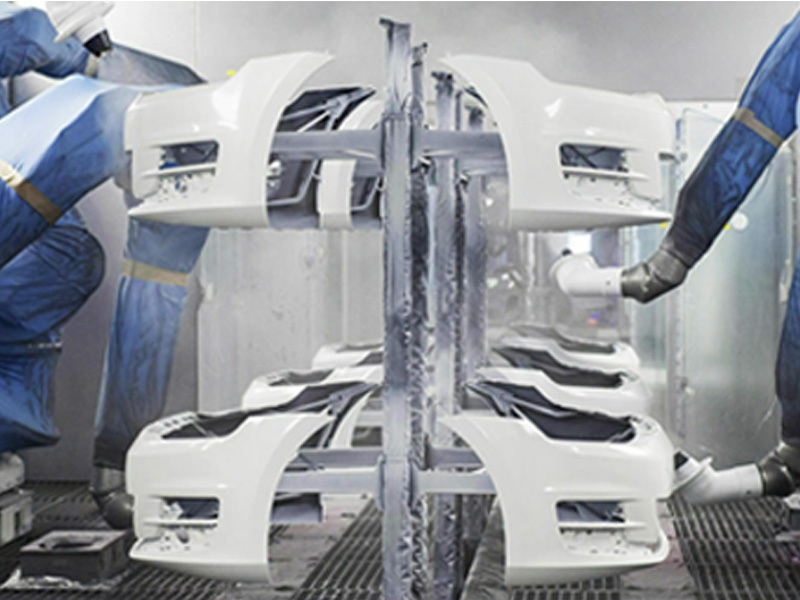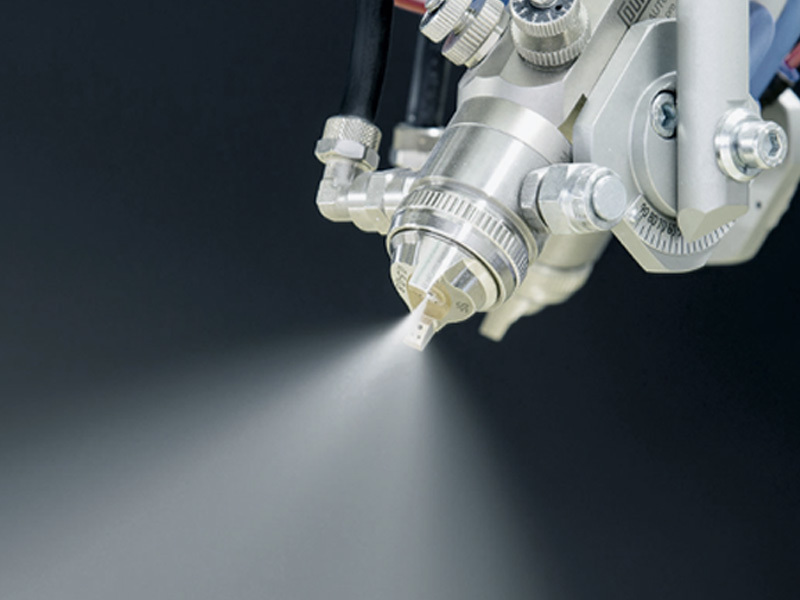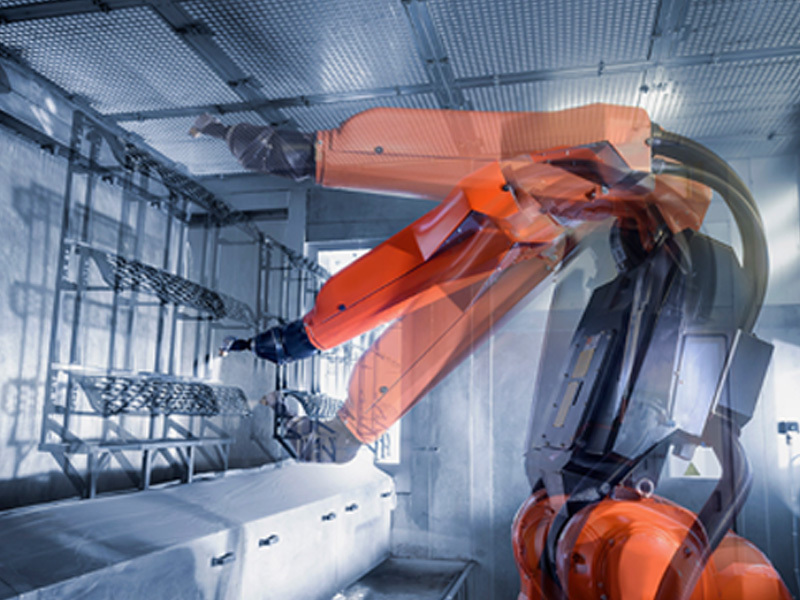Unlocking Efficiency: The Advantages of High Yield Robotic Paint Machines
Release time:
2025-06-10
Unlocking Efficiency: The Advantages of High Yield Robotic Paint Machines Table of Contents What Are High Yield Robotic Paint Machines? Benefits of Using Robotic Paint Machines How High Yield Robotic Paint Machines Work Increased Efficiency and Productivity Enhanced Quality and Finish Cost Savings and Return on Investment Environmental Impact and Sustainability Fut

Unlocking Efficiency: The Advantages of High Yield Robotic Paint Machines
Table of Contents
- What Are High Yield Robotic Paint Machines?
- Benefits of Using Robotic Paint Machines
- How High Yield Robotic Paint Machines Work
- Increased Efficiency and Productivity
- Enhanced Quality and Finish
- Cost Savings and Return on Investment
- Environmental Impact and Sustainability
- Future Trends in Robotic Painting Technology
- Conclusion
- FAQs
What Are High Yield Robotic Paint Machines?
High yield robotic paint machines are advanced automated systems designed to apply paint or coatings with precision and consistency. These machines utilize robotic arms equipped with sophisticated spraying technology to cover surfaces uniformly, reducing waste and enhancing overall efficiency. Unlike traditional painting methods, robotic systems can operate continuously, adapting to various surfaces and materials, making them ideal for diverse manufacturing processes.
Benefits of Using Robotic Paint Machines
Investing in high yield robotic paint machines offers numerous advantages that significantly enhance production capabilities:
Increased Speed and Efficiency
One of the most notable benefits is the **increased speed** at which these machines can operate. Unlike human labor, robotic paint machines work tirelessly, ensuring consistent application rates without fatigue, leading to faster turnaround times.
Precision and Consistency
Precision is paramount in industrial painting. These machines utilize advanced technology to ensure that each layer of paint is applied evenly, reducing the likelihood of defects such as drips or uneven coverage. This level of consistency not only improves the aesthetic quality of the finished product but also increases customer satisfaction.
Reduction of Material Waste
High yield robotic paint machines are designed to minimize material waste. They efficiently control the amount of paint used, significantly reducing overspray and ensuring that every drop contributes to the final product. This efficiency translates to cost savings and a lower environmental footprint.
How High Yield Robotic Paint Machines Work
Understanding the mechanics behind high yield robotic paint machines is crucial for appreciating their benefits. These machines typically consist of:
Robotic Arms
The heart of the system, robotic arms, are equipped with advanced actuators and joints that allow them to move in multiple directions. This flexibility enables them to reach complex shapes and surfaces easily.
Spray Technology
At the end of the robotic arm, advanced spray technology applies the paint. Systems often include electrostatic spray guns that charge the paint particles, allowing for better adhesion to surfaces and reducing overspray.
Control Systems
Sophisticated control systems program the robot’s movements and the spray process. These systems can be integrated with design software, allowing for precise control over paint patterns, thickness, and application speed.
Increased Efficiency and Productivity
The implementation of high yield robotic paint machines dramatically boosts productivity levels in manufacturing processes. By automating painting tasks, businesses can achieve rapid production cycles while maintaining high-quality standards. Furthermore, these machines can operate in environments traditionally unsuitable for human workers, such as hazardous locations, thus enhancing workplace safety.
Enhanced Quality and Finish
Quality is a crucial factor in industrial painting. High yield robotic paint machines ensure that paint is applied evenly and smoothly, resulting in a superior finish. The technology behind these machines minimizes common painting problems, such as orange peel or runs, that can occur with manual application. This not only enhances the visual appeal of the product but also increases its durability.
Cost Savings and Return on Investment
Investing in robotic paint machines can lead to substantial cost savings over time. By reducing paint waste, lowering labor costs, and speeding up production, companies can achieve a swift return on investment. The initial costs of these machines are often offset by the long-term savings associated with increased efficiency and reduced material expenses.
Environmental Impact and Sustainability
Sustainability is increasingly important in today’s manufacturing landscape. High yield robotic paint machines contribute to a more sustainable operation by minimizing waste and reducing harmful emissions. The controlled application of paint leads to less VOC (volatile organic compound) release into the atmosphere, promoting a healthier environment.
Future Trends in Robotic Painting Technology
As technology evolves, so do the capabilities of robotic paint machines. Future trends may include:
Artificial Intelligence Integration
The incorporation of artificial intelligence (AI) will likely enhance the adaptability and efficiency of robotic paint machines. AI can optimize spray patterns, predict maintenance needs, and adjust operations based on environmental changes, further boosting efficiency.
Advanced Materials
The development of new paint formulations that work better with robotic systems can lead to even higher efficiencies. These advanced materials may offer faster drying times, enhanced durability, and improved environmental compliance.
Increased Collaboration with Human Workers
As robotic systems become more advanced, they may collaborate more effectively with human workers, combining the strengths of both to enhance productivity. This hybrid approach can lead to better-quality control and faster production times.
Conclusion
High yield robotic paint machines represent a significant advancement in industrial painting technology. Their ability to enhance efficiency, improve quality, and reduce costs makes them an invaluable asset for manufacturers. As the industry continues to evolve, embracing these machines will not only lead to better products but also promote sustainability and operational excellence. Investing in high yield robotic paint machines is not merely a trend but a strategic move towards future-proofing your manufacturing process.
FAQs
1. What industries benefit most from high yield robotic paint machines?
High yield robotic paint machines are utilized across various industries, including automotive, aerospace, furniture, and appliances, where precision and quality in painting are critical.
2. How do robotic paint machines compare to traditional painting methods?
Robotic paint machines offer superior precision, speed, and reduced waste compared to traditional painting methods, leading to enhanced quality and lower costs.
3. What is the typical return on investment for robotic paint machines?
The return on investment can vary, but many manufacturers see significant savings within the first few years due to reduced labor costs and material waste.
4. Are robotic paint machines suitable for small-scale production?
While they are more commonly used in large-scale operations, robotic paint machines can be adapted for small-scale production with the right configuration and programming.
5. How can companies ensure proper maintenance of robotic paint machines?
Regular maintenance, including software updates and physical inspections, is essential to keep robotic paint machines operating efficiently and effectively.











